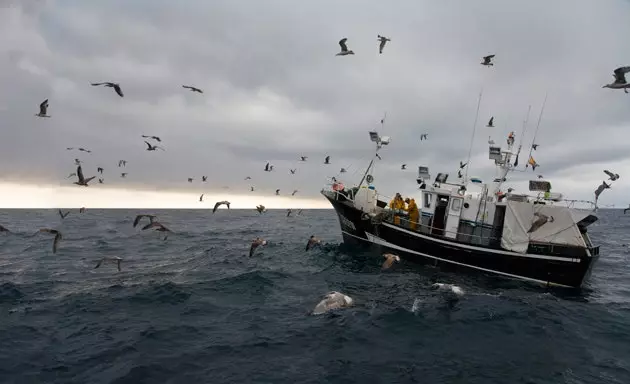
Morning task in Lastres
The sun has not yet risen, the sky shines under a soft orbayar, from my strong footstep, at dawn the boat waits, it's time to go to sea. First stanza of ‘Fishermen’, Asturian seafaring anthem.
Luis Perez Loza jumped into the sea for the first time when he was 13 years old. Today, this retired fisherman with a frank smile recalls the seafaring task: “I have two children and three grandchildren on board a fishing boat. No one has come to know the precarious conditions that my generation lived through. On the high seas, we slept cramped together, clothed and wet. My wife was dedicated to the work of the network, like many of the girls from Tapia. I have dedicated my entire life to the sea. She, in return, has let me live."
This is how the seafaring Asturias speaks. This land, which never loses sight of its Cantabrian horizon, accumulates centuries-old chronicles that give an account of its whaling tradition, of migratory departures with a happy ending, of prosperous returns, of a gastronomy where fish reigns, and even of the latest surfing trends. Intrinsically linked to the powerful Bay of Biscay, the towns of this maritime treaty move to the sound of its tides.
Here the men left for the sea before the crowing of the rooster and the women, touched with the wand of stoicism, They made the nets, carefully cleaned pixines (anglerfish) and bonito in the fish market and assumed that there were still a few moons left to reunite with their husbands and children. This is the chronicle of a sea as a metaphor for hope and freedom.
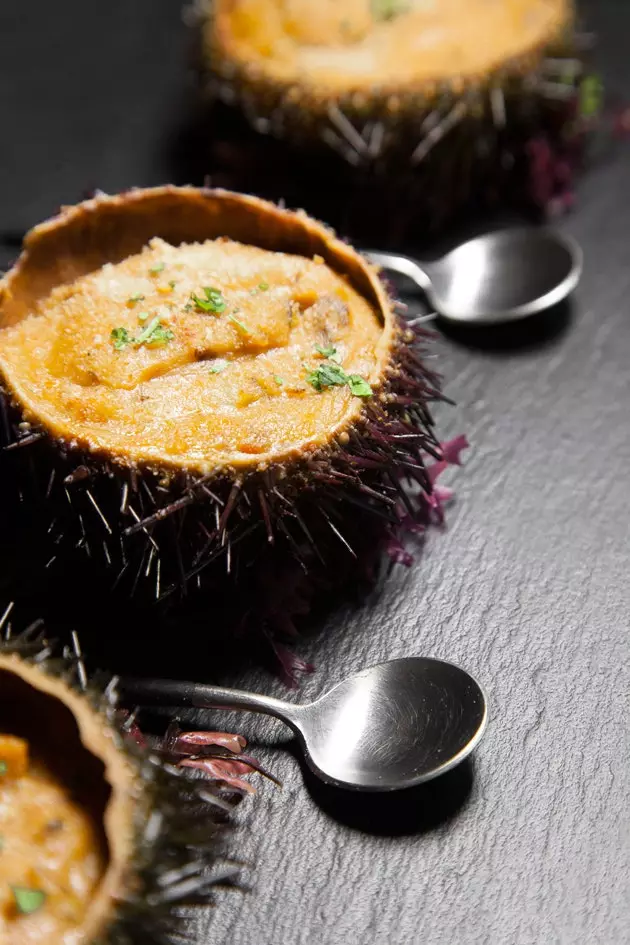
Grilled oricios in Palermo (Tapia)
Neither Luis nor any of the fishermen from Tapia de Casariego in the extreme west of Asturias, forget the tragedy of the Ramona López. It was on November 11, 1960 when six sailors disappeared in rough waters. A monument next to the fishermen's brotherhood commemorates the disappeared under the watchful eye of the Virgen del Carmen. Retirees share evening confidences. They speak, they are silent, they remember. In the seaside neighborhood of San Sebastián, the oldest in the town, the movement of octopuses, oricios, andaricas (nécoras) and bugres (lobsters) is frenetic.
The boats enter escorted by a storm of seagulls. Rush hour at the market. Onofre rescues a huge scorpion fish from one of the polystyrene boxes. He opens his mouth wide: "He sings too." cunning and sarcastic, our cicerone says "to love his tierrina to pain". In the Tapia fish market they sing, and a lot. The humming of falling prices is a rarity in the Asturian rulas (markets), where it is auctioned digitally. The sea has been generous: monkfish, red mullet, sanmartines (the local turbot), scorpion fish, pica and acedías.
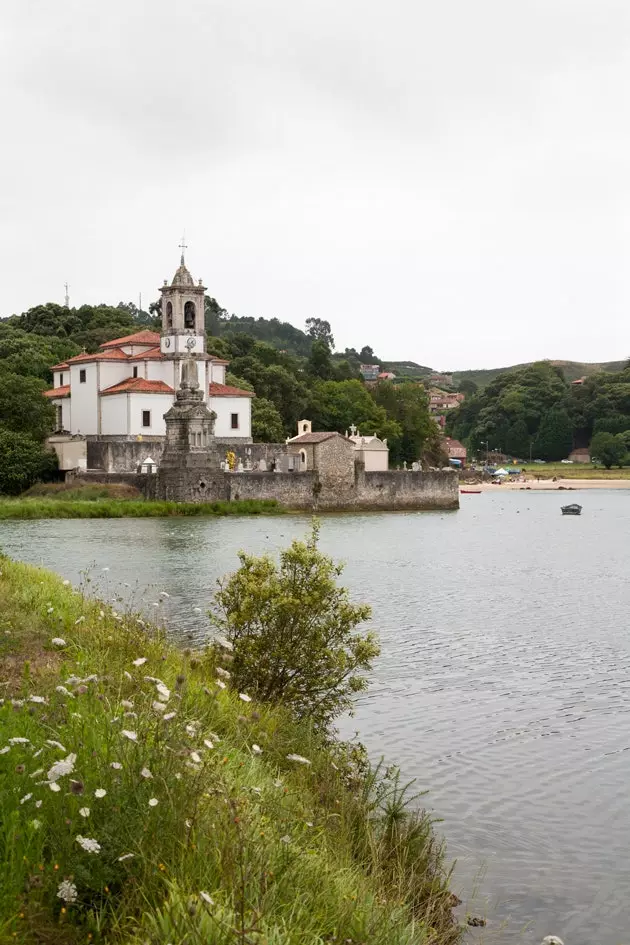
Church and cemetery of Niembro (Llanes)
On the Ribeira beach, in the San Blas neighbourhood, the marine atmosphere dissolves into the modernity of the surfing waves. In the sixties of the twentieth century, the Australians Robert and Peter Gulley found in these beaches a true paradise. One of the school's monitors tells us about it, Pedro, a former surfing champion in Asturias, who defends the fever of the Asturian tables, in the sea and on the table. Undoubtedly, the counterpoint to the coarseness of the Cantabrian lies in its stoves. In the Palermo restaurant some formidable fabes are able to silence the team and a sophisticated presentation of grilled sea urchins confirm that At the Asturian table, being courteous does not take away from being brave.
view from above, Luarca is a nice bunch of buildings that seem to climb the meanders of the Negro River. Its particular physiognomy accounts for the definitive link between the seafaring character and the Indian heritage. The town maintains the stylish mansions of the families that returned from the Americas in the 19th century. Villa Excelsior, Villa Argentina and Casa Guatemala show the power of the Indians at the end of the century.
For Luis Laria, supremacy lies in the depths of the Bay of Biscay, populated by fantastic creatures that surpass all fiction. The director of the Giant Squid Center is an international eminence in the field of kraken. To begin with, he presents us with a female cephalopod architeuthis dux, which reaches 14 meters in length at 17 months. Laria reveals whaling chronicles to us. “Whaling was developed in Asturias thanks to Basque sailors from the Landes (France). He was the pig of the sea, he took advantage of everything: the meat, the bones, the fat and even the semen”.
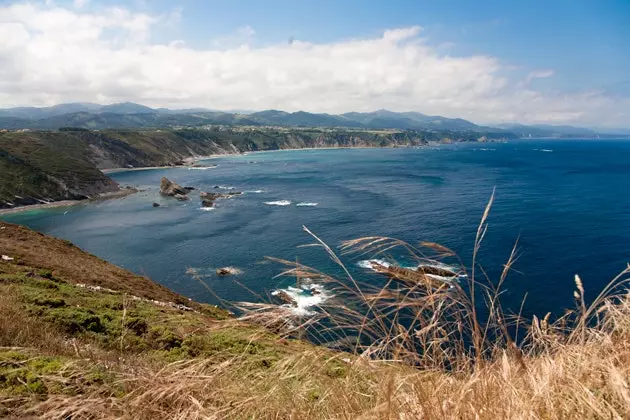
Views from Cabo Vidio, in Cudillero
Sleeping in La Casona de Doña Paca is something like having an authentic güelina for a few days. Freshly squeezed juice, gourmet coffee, ripe fruit and a string of homemade Asturian breads and pastries are served on linen tablecloths. 15 years ago, Montse, the boss of all this, cleaned up an old Indian house to welcome Anglo-Saxons who love the native pace of life.
Today the sun rises in the town of Cudillero. The Irish Hispanist Walter Starkie defined it (with less than 2,000 inhabitants) as "the hidden population" . His beauty went unnoticed from the sea. The opposite of what happens in its alleys, packed with ecstatic travelers literally climbing through the village. The Plaza de la Marina, an old fishing port, is today the epicenter of the town's days off. At one end, El Pescador displays the gigantic fresco by Jesús Casaús (1926-2002), a Catalan painter and adopted son of the town, who boasted the best views, in an Indian house at the highest point of this natural amphitheater. The work honors the seafaring work of women, that transported the goods to the villages in the interior, 30 kilometers away.
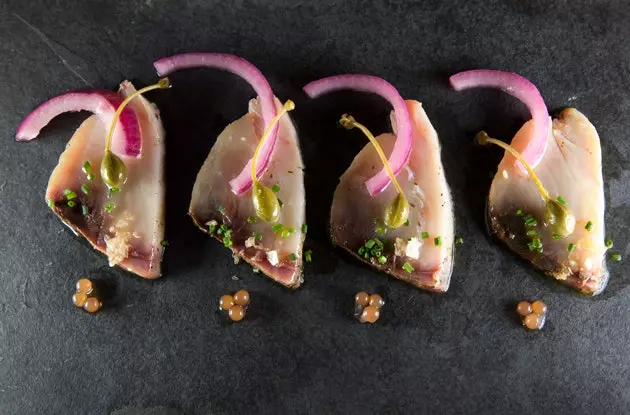
Marinated tuna from the north
About three kilometers from San Lorenzo beach, the Laboral City of Culture is the pretty girl of Gijón. Prettier than a girl, the old university, standing since the forties, occupies twice the space of the Escorial Monastery. Here an experience between gastronomic performance and a thoughtful anatomy lesson awaits us.
The Oviedo chef Sergio Rama awaits with a roguish gesture next to a specimen of about eight kilos of alalunga tuna. Without batting an eye, and listening to the photographer's clicks, Sergio prepares to snort this spectacular white tuna. a clean cut separates the tuna delicacy, the ventresca, from the part next to the intestines, the anisakis' playground. He then skillfully slices up the loins, which are later turned into wok and grilled meat.
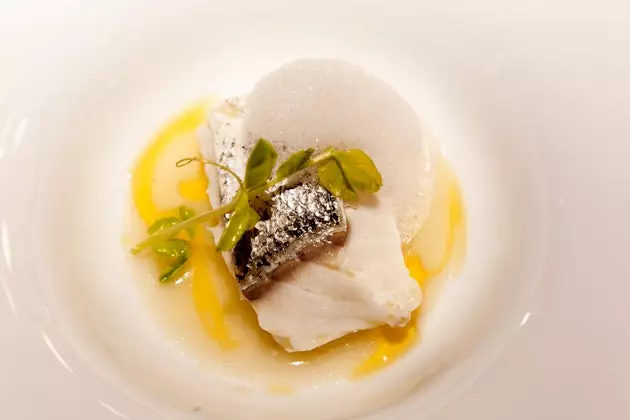
Hake in potato soup from Auga (Gijón)
The reader may identify Lastres with his artistic name: San Martín del Sella. Barely three years ago, the secluded village opted for the power of fiction as an accurate publicity hook. He did it with Doctor Mateo. Many of his followers continue to make pilgrimages in search of their already emblematic locations. For the Llastrino fishermen, the pilgrimage ends in the chapel of the Virgen del Buen Suceso, their patron saint. The offerings of the pilgrims are as unusual as they are symbolic. A portentous iconography that speaks of hopes and expectations. In my case, the sacrifice to the 'good event' is summed up in a formidable seafaring hangover.
It's not even three in the morning and Orlando, visibly alert, greets us from his sailboat. We like him right away: “Coffee and Biodramina?”. Today we are going to fish, or rather, to photograph the deeds of a fishing boat. We set off heading northeast from the port of Lastres, about three miles away we find the Xarabal boat. By now, as Alex capers on deck, my blog is that of a vegetable in a blender. In the end, the emotion of the first time triumphs and I focus on these professionals in the art of the fence. The moment acquires theatrical overtones: background black, artificial lighting, carnival ride banding and the coming and going of fishing gear.
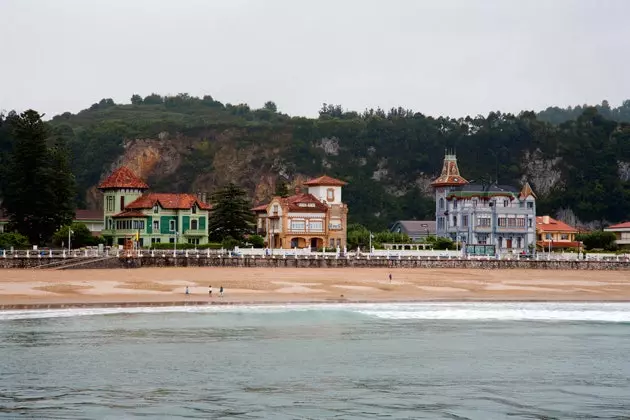
Promenade of the Marina in Ribadesella
Entrenched in the viewpoint of the hermitage of the Virgen de Guía, I instantly understand why Ribadesella is known as the beach of the Picos de Europa . The massifs upholstered with meadows of the second most visited natural park in Spain guard the town.
On the Paseo de la Marina, the Gran Hotel del Sella symbolizes the germ of the evolution of high-class tourism, when the Marquises of Argüelles, established their summer residence in this mansion. Today the urban nucleus distills today a stately atmosphere more typical of the 21st century : couples who seem to be taken from a Cesc Gay film, handsome Nordic men on the road to Santiago and mothers and daughters who share Levi's and Hunters. Only once a year, in August during the Descent of the Sella, the town parks its sophisticated pose to wet and show its shirt to the whole world.
With some contemporary flash, respects the Riosellan gastronomic tradition Bruno M. Lombán, the commander of the kitchen of Fifteen Knots. Adjacent to Villa Rosario, this old cider house has convinced experts of good food in just over a year. The rice with lobster, the tasting of local cheeses and the forcefulness of its croquettes of copango justify the visit.
Five kilometers away, a fade to black interrupts the route. La Cuevona is a cavernous natural wonder typical of this limestone environment, and only access to the tiny village of Cuevas of about 60 inhabitants. It hosts chamber music concerts and hundreds of flashes.
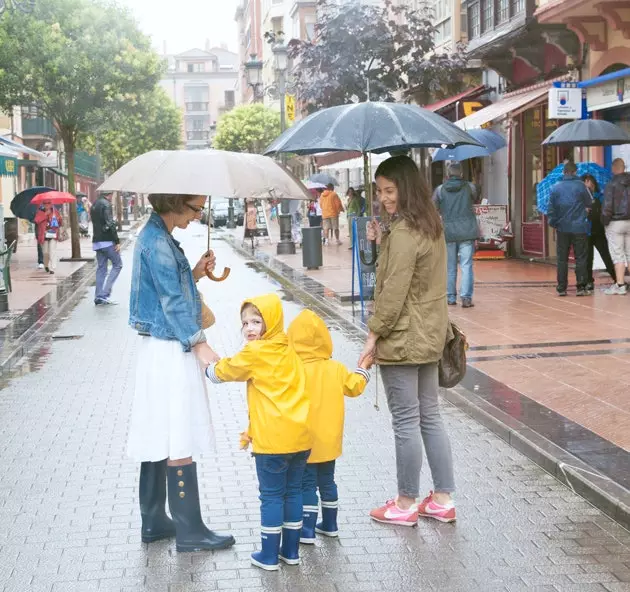
Mothers and daughters walking in Ribadesella
Two hours east of Tapia, Llanes treasures about 30 beaches guarded by the green carpet of the Sierra de Cuera. It was a walled city until the 13th century, when it was born the prestigious Seafarers Guild . The center of the Brotherhood of San Nicolás, today the chapel of Santa Ana (1480), was during the 14th and 15th centuries the house of the whales. In 1905 the train arrived at Llanes. With him, aristocratic vacationers who made the town a benchmark of sophistication and the good life. From the viewpoint of the Paseo de San Pedro (1947), Llanes convinces. In the distance, I distinguish the Cubes of Memory, by the artist Agustín Ibarrola , some concrete blocks intervened by the artist with abstract and figurative motifs around the history of Asturias.
The seventh art also ends in Llanes. Some of the best filmmakers have shot on this kind of natural set. The limestone landscapes, responsible for beautiful accidents such as Gulpiyuri (an inland beach 100 meters from the coast), impeccable architecture (the church of Santa María del Concejo is almost the only example of Gothic in Asturias), and the services that lend the villa, turn it into a desirable film studio. José Luis Garci, Juan Antonio Bayona, Victor Erice, Vicente Aranda and Gonzalo Suárez –temporary resident and beloved of the town– have filmed in some 25 locations in Llanes.
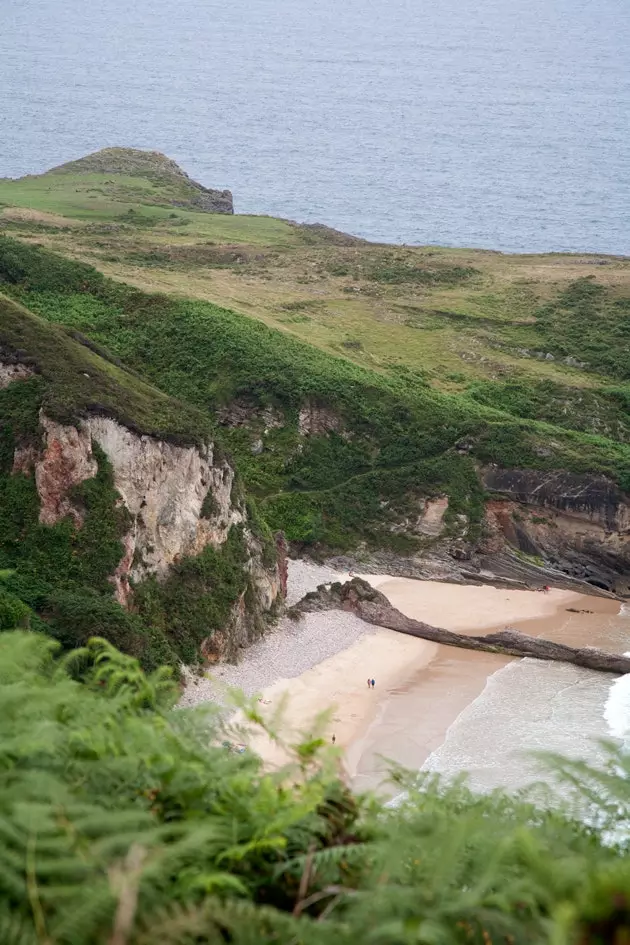
Ballota beach from the Boriza viewpoint (Llanes)
The maritime route ends in the village of La Salgar, where another director awaits us. In this case, the demiurge of Asturian cuisine and worthy of two Michelin stars. Nacho Manzano surprises with a gesture reminiscent of the best chef in the world. He raves about one of his star dishes, onion and cheese scramble on corn cake. “Asturias was a pioneer in the use of corn that the Indians imported from America. I remember my mother preparing the cakes here, formerly Casa Herminia. It is a flavor closely linked to the childhood of Asturians”. His cuisine also uses techniques from other latitudes: “From Japan, I like their crisp, fat-free flavors; The Peruvian ceviche is an exquisite conservation technique, cousin of the marinade. In the end, kitchens have more in common than we think”.
“I am known for ten dishes, that is important. It is my hallmark”, concludes the chef. Manzano's lucidity confirms my suspicions. Perhaps the hallmark of the Asturian coast translates into the singular spirit of its Cantabrian Sea. The same one that has forged his impetuous spirit, essentially gentle and free of artifice. Now, if Asturias looks out to the sky from the Picos de Europa, how does she look from her Cantabrian Sea? Emilio Pola's verses give an idea:
In the distance you can see Cantabria
the huge needles that crown
bluish white; they are so excellent
that the heart when contemplating them, suffers.
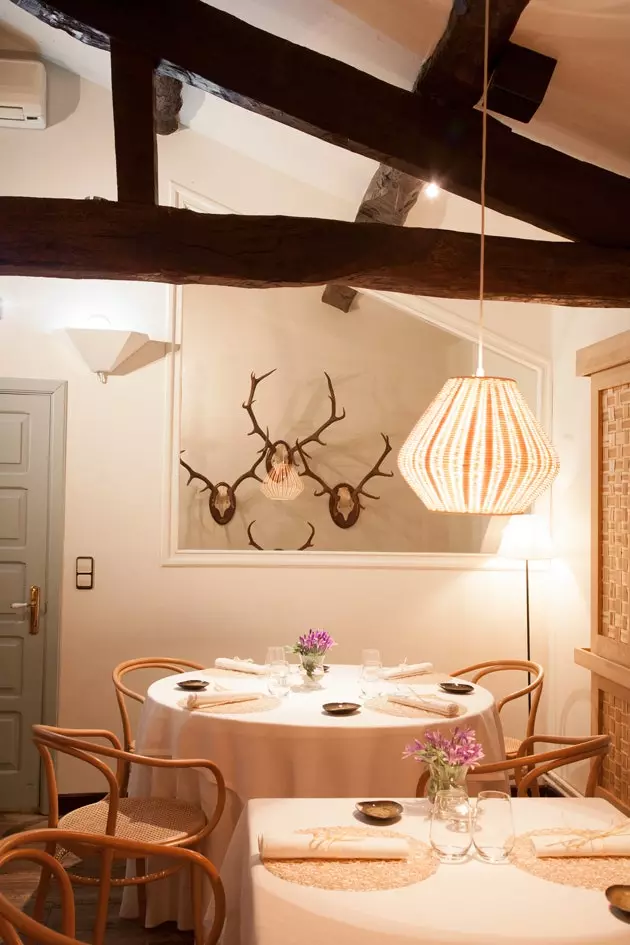
Lounge of the Nacho Manzano restaurant, in La Salgar
